
500 Hrs Hatha Yoga TTC
The Sunshine Yoga School’s 500 Hours Hatha Yoga TTC adheres to the guidelines of Yoga Alliance USA, providing an engaging approach to learning for practitioners at every level. Our focus is on the practical aspects of Hatha Yoga, ensuring participants derive maximum benefits from this divine process. Through this hands-on experience, our aim is to bring individuals closer to inner peace and guide them on the enlightened path of spiritual awakening. The esteemed trainers integral to our 500 Hours Hatha Yoga Teacher Training Certification program in India offer excellent guidance and teachings, simplifying principles for easy understanding. Our teaching methodology, yielding highly positive results, establishes us as the premier Yoga School in Rishikesh for 500 Hours Hatha Yoga TTC.
Participate in our upcoming programs for 500 Hours Yoga Teacher Training Certification by reaching out to us below for booking details. For comprehensive information on how we conduct our programs and courses, please review the sections mentioned below before choosing us as your training partner. Embark on this journey today to explore the divine within yourself and experience a profound spiritual awakening! The 200 hours yoga TTC + 300 hours yoga TTC combine for a 500 Hours 65 Days Yoga Teacher Training Course, highly recommended for all levels of yoga practitioners covering both beginners and advanced levels. The first 28 Days (200 hrs) establish a strong yoga foundation, providing the right direction, lifestyle, and purpose to love and serve people, practice daily asanas, pranayama, meditation, and teach yoga. In the subsequent 37 Days (300 hrs), students are guided toward advanced practices of yoga, preparing them to share the immortal wisdom of yoga sciences with the world upon completing the full 500 hours.
Why Choose this Course?
Individuals on a quest for enduring peace and harmony can avail themselves of the myriad benefits offered by our 500-hour yoga teacher training in India. This transformative experience not only helps individuals break free from pre-defined mental boundaries but also opens up their intellect and conscious receptors to receive the divine bliss. Guided by instructions and immersed in the Ashram lifestyle, practitioners emerge with a rejuvenated sense of self upon completion of this 500-hour holistic yoga teacher training in India Certification. Recognized by Yoga Alliance USA, this certification empowers successful disciples to pursue yoga teaching as a career and spread the essence of yoga globally. The program has been meticulously designed to help disciples grasp the core essence of Sunshine Yoga School and its profound benefits, fostering intellectual development and awakening the mind to embrace divine bliss. With highly revered Spiritual Masters at Sunshine Yoga School in Rishikesh, we ensure the best teaching and guidance, aiming to instill in every disciple a deep conceptual clarity about ancient Yogic practices and associated principles, cultivating the path to becoming a proficient Yoga teacher.
Why Choose Us?
Sunshine Yoga School holds the designation of a Registered Yoga School (RYS) certified by Yoga Alliance, indicating that we adhere to the high standards of excellence set by Yoga Alliance. Our yoga teacher training program is both comprehensive and of top quality, designed to furnish you with the knowledge, skills, and confidence necessary to attain the status of a registered yoga teacher (RYT 500) with Yoga Alliance. Our certification holds international recognition, granting you the ability to teach yoga anywhere in the world. Read More
To achieve the status of a registered yoga teacher with Yoga Alliance, completion of a 200/300/500 hours yoga teacher training program with a registered yoga school (RYS) is required. As a Yoga Alliance registered school, we offer the essential training and guidance to support your journey toward becoming a successful yoga teacher. Our seasoned instructors possess a profound understanding of yoga and are dedicated to assisting you in honing your skills and knowledge. They will be there for you at every stage, offering personalized attention to ensure you receive the necessary support.
Upon completing this program, you will be awarded an RYT 200 and RYT 300 certificate from Yoga Alliance, symbolizing your commitment to your yoga practice and your aspiration to become a yoga teacher. This certificate is widely respected and adds credibility to your career as a yoga instructor. Enroll in our courses and commence your path toward becoming a Registered Yoga Teacher with Yoga Alliance. Our program is meticulously crafted to deliver a comprehensive and high-quality training experience, equipping you with the skills and knowledge essential for success in the yoga industry.

Course Modules

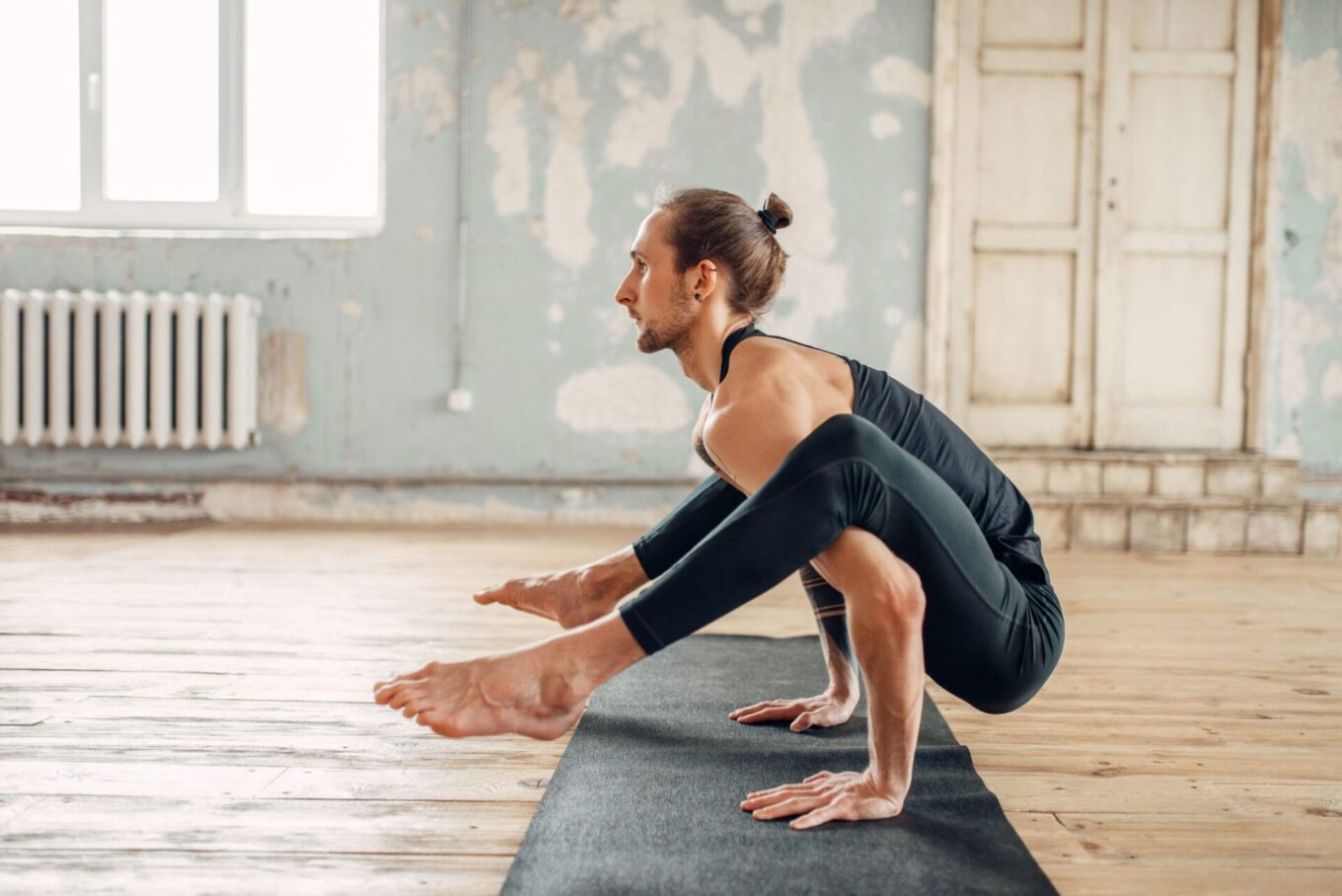
Hatha Yoga (Asana)
Apart from Hatha Yoga asanas, these sessions cover the history, philosophy, and development of yoga from ancient times to the present, including important texts. You will understand yoga's goals and how practices fulfill them, connecting your personal practice to its roots for more meaning and better progress evaluation.
- Standing pose
- Sitting pose
- Kneeling pose
- Forward bending asana
- Backword bending asana
- Twisting asana
- Fire series asana
- Tadasana (palm tree pose)
- Trikonasana (triangle pose)
- Uttkatasana – chair pose
- Virbhdrasana 1 (Warrior 1)
- Virbhdrasana 2 – warrior 2)
- Vriksasana – tree pose
- Parvatasana – mountain pose
- Adho mukha svanasana – downward facing dog
- Baddha Konasana- bound angle pose
- Bhujanghasana – cobra pose
- Urdhva mukha svanasana –upward facing dog
- Matsyasana-
- Setu Bhandasana
- Utrasana
- Dhanurasana
- Salabhasana
- Supta Virasana- reclining hero pose
- Virasana –hero pose
- Vajrasana –thunderbolt
- Gomukhasana
- Balasana
- Dandasana
- Ardha Matsyendrasana
- Triyak tadasana (swaying palm tree pose)
- Parivirtatrikon asana – revolving triangle pose
- Virbhdrasana 3 – warrior 3
- Ardha Chandrasana- Half moon pose
- Kati chakrasana – waist rotating pose
- Malasana – squatted yoga pose
- Garudasana – eagle pose
- Rajkapoot asana – pegion pose
- Marjari asana
- Vyaghrasana
- Standing Yoga postures
- Padhastasana
- Parivrtta Trikonasana
- Parshwakonasana
- Parivrtta parshwakonasana
- Veerbhadrasana III
- Ardh chandrasana
- Prasarita padottanasana
- Sirsasana
- Sarvangasana
- Pincha mayurasana
- Kandhrasana
- Chakrasana
- Rajkapotasana
- Ardh padam paschimotanasana
- Padprasar paschimotanasana
- Parivritti janu sirshasana
- Kati chakrasana
- Bak dhayan asana
- Mayurasana
- Natraj asana
- Garudasana
- Makarasana
- Prasarita padottanasana
- Parsvottanasana
- Parivrtta Trikonasana
- Uttthita Hasta Padangusthasana
- Natraj asana
- Parivrtta Baddha Parsvakonsana
- Parivtta Janu Sirsasana
- Upavistha Konasana
- Kurmasana
- Simhasana
- Supta Virasana
- Eka Pada Rajakapotasana
- Anantasna
- Salamba Sarvangasana
- Karnapidasana
- Jathara Parivrtti
- Chaturanga Dandasana
- Bakasana
- Urdhva Danurasana
- Salamba Sirasasana
- Pincha mayurasana
- Adho mukha vrksasana
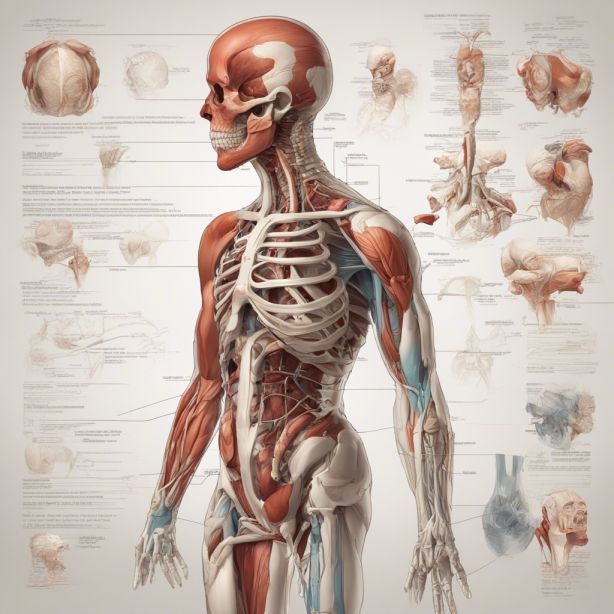
Yoga Anatomy and Physiology
While gaining an understanding of the goals and philosophy of yoga and having overviewed the practices that ancient yogis used to meet these goals, we will examine the same practices from the perspective of modern science. We will explore how the effectiveness of yogic practices is explained in traditional, anatomical, and physiological terms. This topic will also provide insight into safety during practice. By being aware of how the body works, understanding vulnerable points, recognizing how diseases originate, and comprehending their impact on various body systems, you will learn how to build a practice safely for all students and adapt it to specific needs.
- Understanding skeletal system for joints movements
- The function of the Muscular system in yoga
- Respiratory system and Pranayama
- Spiritual Anatomy
- Posture anatomy
- Digestive System
- Circulatory System
- Effects of breathing in respiratory system
- Effects of Yoga practice and Nauli in digestive system
- Muscular and skeletal system with advance postures
- Nadis-the energy channel
- Prana and nervous system
- Kundalini Shakti
- Chakras
- Panchakosha
- Theraputic Applications of yoga postures and how to avoid injury in yoga postures
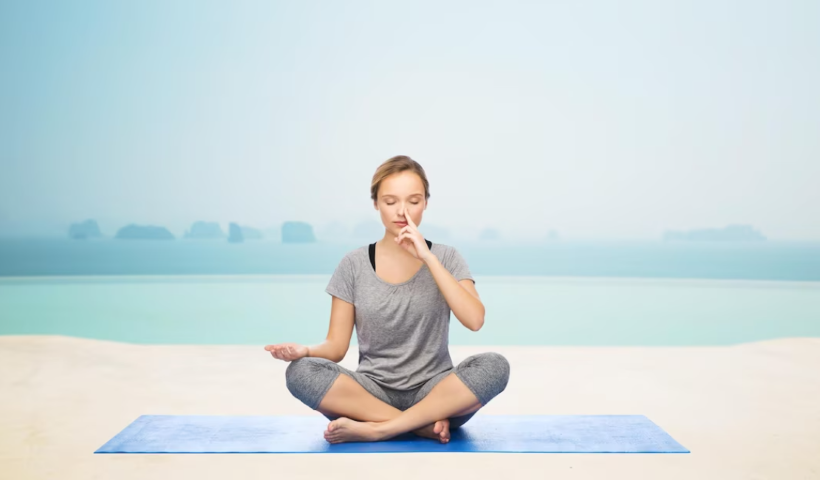
Pranayama
While pranayama practices will be included in daily classes, there will be dedicated sessions specifically focused on pranayama. In these sessions, you will learn various breathing techniques, such as anulom-vilom pranayama, nadi shodhan pranayama, sitkari, ujjayi, kapalbhati, and more. Additionally, we will provide lectures on the philosophy of pranayama, as well as the philosophy of the pancha prana.
- What is Prana and Pranayama?
- How Prana flows through the body?
- Types of major and sub prana
- Pranayama and life span
- Prana healing
- Know how to breath correctly?
- Diaphragmatic breathing and qualities of breath
- Anatomy of pranayama
- Kapal Bhati Pranayama Level I
- Bhastrika Pranayama Level I
- Bhramari Pranayama Level I
- Sitli and Sitkari Pranayama without retention
- Yogic breathing Level I with sitting and supine position
- Nadi sodhanam Pranayama 1 technique
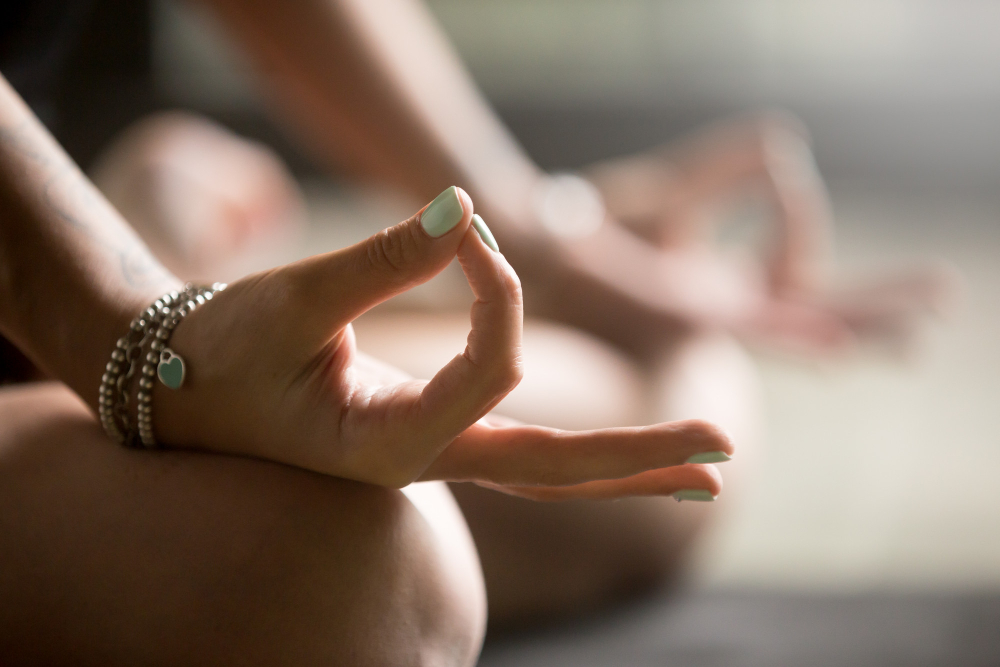
Mudra (Gesture or Attitude)
Maha Mudra, also known as the Great Gesture, is the first Mudra mentioned in both Hatha Yoga Pradeepika and Gheranda Samhita. In Sanskrit, 'Maha' means great, and 'Mudra' refers to a gesture, attitude, or seal. Maha Mudra is a technique designed to elevate human consciousness to higher levels and improve health. It is highly recommended by yogis and is best practiced in the morning on an empty stomach. Performing Maha Mudra creates a conducive environment for meditation practices, making it ideal to incorporate before the start of meditation.
- What is Mudra and its necessity in yoga?
- Jnana Mudra
- Chin mudra
- Bhairava mudra
- Vishnu/pranayama mudra
- Origin of Mudras
- Why hand mudras?
- Benefits of Mudra practice
- Five elements theory
- Acupressure and Scientific theory
- Types of Hand mudra
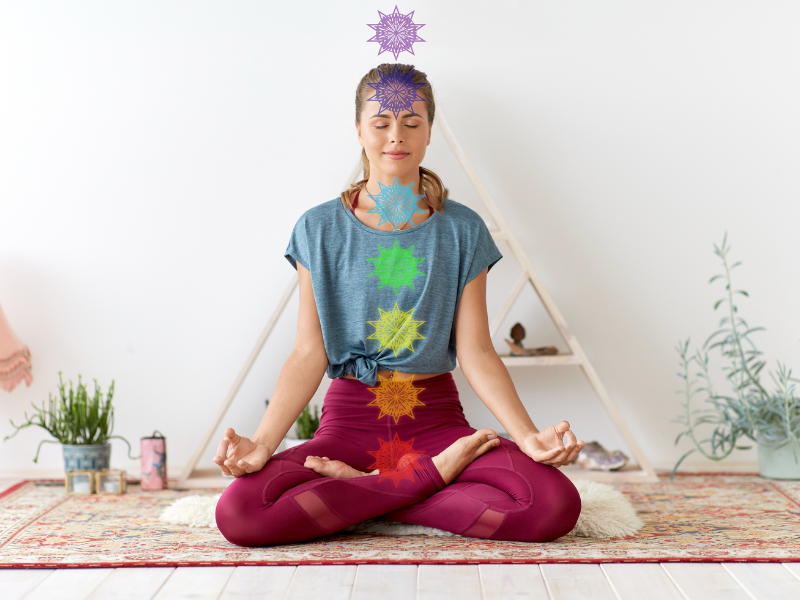
Bandha (Yogic locks)
A Bandha, or yogic lock, enables a yogi to block and direct the flow of pranic energy in a specific way to alter the energy pattern in the body. Bandhas not only modify the flow of pranic energy through the nadis (energy meridians) but also affect the flow of nerve currents in the nervous system and blood flow through the blood vessels. Bandhas are mentioned in most classical yoga texts, such as Hatha Yoga Pradeepika, Gheranda Samhita, Siva Samhita, etc. In yogic scriptures, Bandhas are often grouped with mudras or yogic gestures. The reason for this is that both Bandha and Mudra modify the energy pattern in the body, leading to heightened levels of awareness.
- What are Energy blockages?
- Reasons for blocking the energy and chakras
- Three major energy blockages
- Mula bandhas (Root lock) Level I
- Uddiyana bandha (Abdominal lock) Level I
- Jalandhar Bandha (Throat Lock) Level I
- Maha Bandha ( Great Lock) Level I
- Mula bandha (for stability and awakening of Kundalini)
- Uddhiyana bandha (Abdominal lock for balancing inner organs)
- Jalandhar bandha (throat lock)
- Maha Bandha
- What are Energy blockages?
- Reasons of blocked energy and chakras
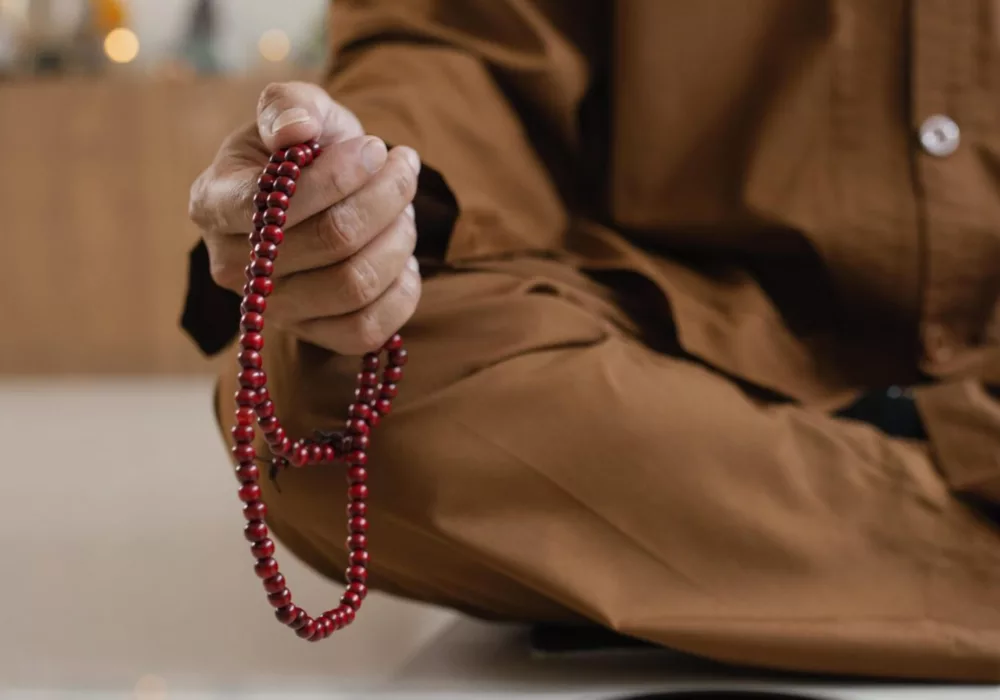
Mantra Chanting
Chanting has been an integral part of all religions throughout the ages. As we sit together in one place, we may have different thoughts. However, when we start chanting, there is one thought and one rhythm in all our minds. All minds become one. This oneness creates a profound energy that enlivens us.
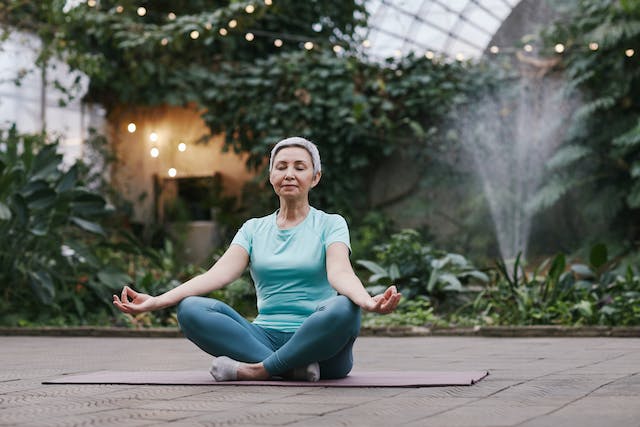
Meditation
This module delves into the importance of meditation in Yogic Practices. Participants will learn about various meditation techniques and the benefits derived from daily practice. The module offers a concise exploration of why meditation matters in the context of yoga, providing essential insights into its significance and practical applications.
- What is meditation and what it is not?
- Major Meditation Traditions
- How to sit during meditation?
- How to breath during meditation?
- How to relax during meditation?
- How to focus during meditation?
- So-ham meditation
- Nadabrahma meditation
- Mantra meditation (Improve anxiety)
- Breath awareness meditation (Improving willpower)
- Obstacles in meditation
- Om meditation (Energy booster)
- Meditation and stress management
- Trataka (Candle light meditation) (improve eye sight and courage)
- Dynamic meditation (emotional block removing)
- Silence Meditation (For enlightenment and peace)
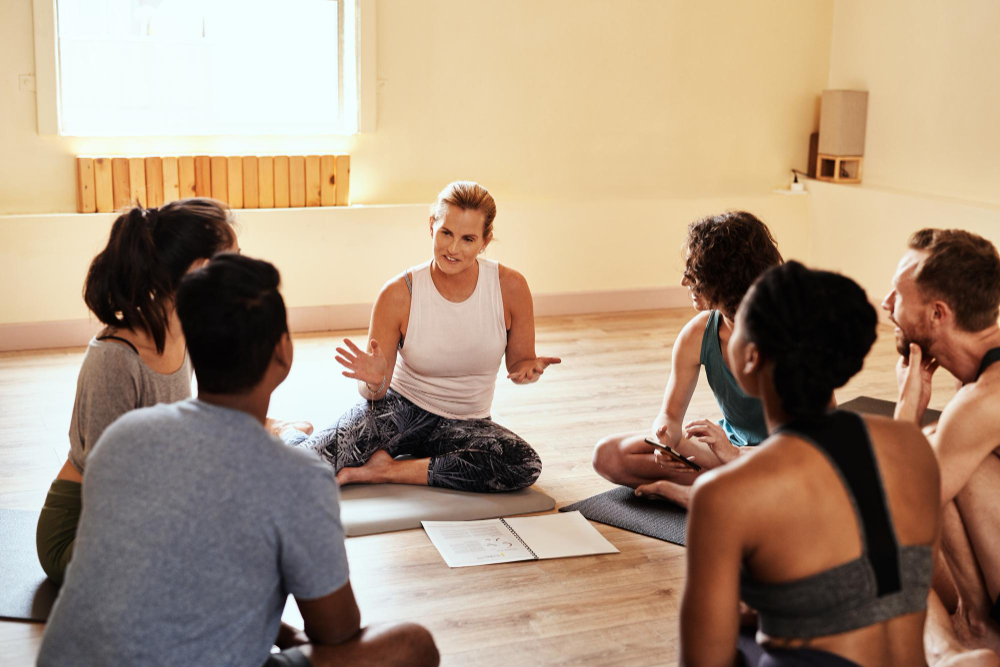
Yoga Philosophy / Life Style Ethics
The main philosophy of yoga is simple: the mind, body, and spirit are all interconnected and cannot be clearly separated. However, a multitude of philosophical ideas has been developed by delving into the deeper dimensions of the body, mind, and spirit.
- Yoga Tradition and History of yoga
- The Classical Texts of Yoga Tradition
- Yoga Sutra of Patanjali – Raja Yoga
- Bhagavat Gita – Lord Krishna
- What is Hatha Yoga
- Mind and its functions
- Chakras and Kundalini in Yoga
- Hinduism – a way of living not a religion
- Yoga philosophy and understanding of Truth
- Patanjali Yoga Sutras
- Hatha Yoga Pradipika

Shatkarma
Shatkarma is a set of yogic purifications for the body, forming a part of yoga sadhanas or practice. Their purpose is to remove impurities and toxins accumulated in the body, and they are clinical in nature. Shatkarma helps in curing diseases and prepares the body for Asanas and Pranayama.
- Jal Neti (Nasal cleaning for opening the cognitive senses)
- Rubber Neti (Nasal cleaning with a cathedral for intense nasal block)
- Agnisar Kriya
- Kapalbhati Kriya
- Trataka Kriya
- Kunjal Kriya

Daily Schedule
Outline of the Schedule (Subject to Changes):
5:30 AM – Wake up
6:00 to 7:15 AM – Pranayama, Meditation, Chanting, Shatkarma
7:15 to 7:45 AM – Tea Break
7:45 to 9:00 AM – Hatha Yoga
9:00 to 10:00 AM – Breakfast
10:30 to 12:00 PM – Yoga Philosophy
12:00 to 12:30 PM – Tea Break
12:30 to 1:30 PM – Therapeutic Alignment, Human Anatomy/Physiology
1:30 to 2:30 PM – Lunch
3:00 to 4:00 PM – Rest/Self-Study
4:30 to 6:30 PM – Postures/Alignment Hatha Movement
7:00 to 8:00 PM – Dinner
9:30 PM – Sleep (Lights out)
Additional Information
Course Fee Includes:
- Accommodation facilities with a private room and attached bathroom for your comfort and privacy.
- Free Wi-Fi service throughout the campus to stay connected with loved ones.
- 24-hour hot water facility.
- Free filter mineral water facility to keep you hydrated and healthy during the course.
- Three pure vegetarian meals per day (breakfast, lunch, and dinner) to nourish your body and mind.
- Two tea breaks (morning and evening) to keep you energized and focused throughout the day.
Study Materials:
- Main text book, Anatomy text book, Note book.
- Shatkarma Kit (Cleansing tools).
Recreational Activity:
- One Day Sightseeing near Rishikesh.
- One day ancient temple visit
Eligibility:
- At Sunshine Yoga School, we welcome individuals above the age of 18 years to enroll in our courses. However, we request that students inform us in advance of any medical conditions they may have, and provide proper certifications as required. It is important to note that we cannot be held responsible for any consequences that may arise as a result of lack of information.
- For the safety and well-being of all our students, we strongly advise pregnant women to consult with their physicians before enrolling in our courses. This will ensure that any necessary precautions or modifications can be made to ensure a safe and comfortable experience.
- At Sunshine Yoga School, we are committed to providing a supportive and inclusive learning environment for all students. If you have any concerns or questions regarding eligibility or medical conditions, please do not hesitate to contact us. Our team is always available to provide guidance and support as needed.
Terms & Conditions:
- At Sunshine Yoga School, we believe in promoting a Sattvic lifestyle during the course period, with a focus on simplicity, purity, and mindfulness. To ensure that all students can fully immerse themselves in the course, there will be no intoxications or fancy meals allowed for the duration of the course. Additionally, to maintain a distraction-free environment, friends or relatives are not allowed to visit during course timings, unless they are registered for the program.
- Our accommodation is designed to provide a simple and peaceful living space, with each student allotted one room with an attached toilet. Our meals are also prepared with a focus on purity and simplicity, following the principles of a Sattvic diet.
- Please note that fees, once paid, are non-refundable. However, in the event of a solid reason, if somebody has to withdraw, we may offer a fee adjustment or further dates of rejoining the program.
- For any grievances please contact the course coordinator.
- It is important to note that Sunshine Yoga School reserves the right to cancel a student’s candidature at any time during the course in the event of non-compliance with our code of conduct or any other forms of misconduct. We take the well-being and safety of our students and community seriously and will take appropriate action if necessary to maintain a harmonious and respectful learning environment.
Area Information:
Rishikesh is a sacred town nestled in the foothills of the Himalayas on the banks of the Ganges. There are restrictions on alcohol, egg, and meat. Drink only bottled water, which is readily available throughout the town.
Good medical doctor and dentist facilities are available.
Climate: Rishikesh climate is continental type, but the weather is pleasant as Rishikesh located at the foothills providing cool breeze. The best time to visit is from mid September to April.




Hatha Yoga (Asana)
Apart from Hatha Yoga asanas, these sessions cover the history, philosophy, and development of yoga from ancient times to the present, including important texts. You will understand yoga’s goals and how practices fulfill them, connecting your personal practice to its roots for more meaning and better progress evaluation.
- Standing Pose
- Sitting Pose
- Kneeling Pose
- Forward Bending Asana
- Backword Bending Asana
- Twisting Asana
- Fire Series Asanas
- Tadasana (Palm Tree Pose)
- Trikonasana (Triangle Pose)
- Uttkatasana (Chair Pose)
- Virbhdrasana 1 (Warrior 1)
- Virbhdrasana 2 (Warrior 2)
- Vriksasana – Tree Pose
- Parvatasana – Mountain Pose
- Adho Mukha Svanasana – Downward Facing Dog
- Baddha Konasana – Bound Angle Pose
- Bhujanghasana – Cobra Pose
- Urdhva Mukha Svanasana – Upward Facing Dog
- Matsyasana
- Setu Bhandasana
- Utrasana
- Dhanurasana
- Salabhasana
- Supta Virasana – Reclining Hero Pose
- Virasana – Hero Pose
- Vajrasana – Thunderbolt
- Gomukhasana
- Balasana
- Dandasana
- Ardha Matsyendrasana
- Triyak Tadasana (Swaying Palm Tree Pose)
- Parivirtatrikon Asana – Revolving Triangle Pose
- Virbhdrasana 3 (Warrior 3)
- Ardha Chandrasana – Half Moon Pose
- Kati Chakrasana – Waist Rotating Pose
- Malasana – Squatted Yoga Pose
- Garudasana – Eagle Pose
- Rajkapoot Asana – Pegion Pose
- Marjari Asana
- Vyaghrasana
- Standing Yoga Postures
- Padhastasana
- Parivrtta Trikonasana
- Parshwakonasana
- Parivrtta Parshwakonasana
- Veerbhadrasana III
- Ardh Chandrasana
- Prasarita Padottanasana
- Sirsasana
- Sarvangasana
- Pincha Mayurasana
- Kandhrasana
- Chakrasana
- Rajkapotasana
- Ardh Padam Paschimotanasana
- Padprasar Paschimotanasana
- Parivritti Janu Sirshasana
- Kati Chakrasana
- Bak Dhayan Asana
- Mayurasana
- Natraj Asana
- Garudasana
- Makarasana
- Prasarita Padottanasana
- Parsvottanasana
- Parivrtta Trikonasana
- Uttthita Hasta Padangusthasana
- Natraj Asana
- Parivrtta Baddha Parsvakonsana
- Parivtta Janu Sirsasana
- Upavistha Konasana
- Kurmasana
- Simhasana
- Supta Virasana
- Eka Pada Rajakapotasana
- Anantasna
- Salamba Sarvangasana
- Karnapidasana
- Jathara Parivrtti
- Chaturanga Dandasana
- Bakasana
- Urdhva Danurasana
- Salamba Sirasasana
- Pincha Mayurasana
- Adho Mukha Vrksasana

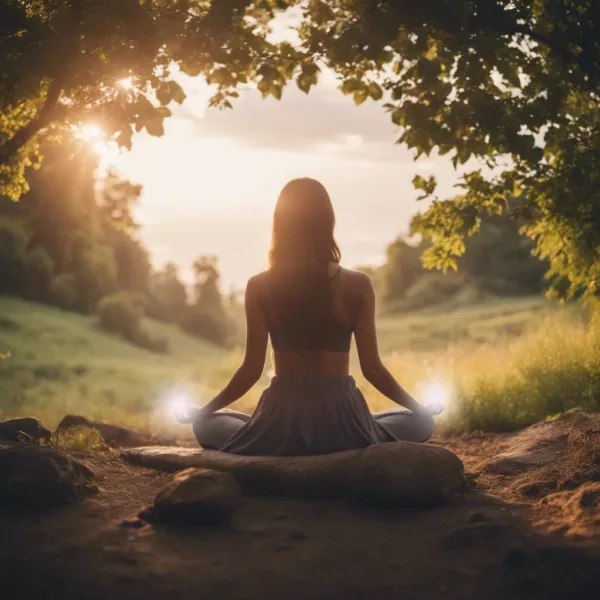

Meditation
This module delves into the importance of meditation in Yogic Practices. Participants will learn about various meditation techniques and the benefits derived from daily practice. The module offers a concise exploration of why meditation matters in the context of yoga, providing essential insights into its significance and practical applications.
- What is meditation and what it is not?
- Major Meditation Traditions
- How to sit during meditation?
- How to breath during meditation?
- How to relax during meditation?
- How to focus during meditation?
- So-ham meditation
- Nadabrahma meditation
- Mantra meditation (Improve anxiety)
- Breath awareness meditation (Improving willpower)
- Obstacles in meditation
- Om meditation (Energy booster)
- Meditation and stress management
- Trataka (Candle light meditation) (improve eye sight and courage)
- Dynamic meditation (emotional block removing)
- Silence Meditation (For enlightenment and peace)



Yoga Anatomy and Physiology
While gaining an understanding of the goals and philosophy of yoga and having overviewed the practices that ancient yogis used to meet these goals, we will examine the same practices from the perspective of modern science. We will explore how the effectiveness of yogic practices is explained in traditional, anatomical, and physiological terms. This topic will also provide insight into safety during practice. By being aware of how the body works, understanding vulnerable points, recognizing how diseases originate, and comprehending their impact on various body systems, you will learn how to build a practice safely for all students and adapt it to specific needs.
- Understanding skeletal system for joints movements
- The function of the Muscular system in yoga
- Respiratory system and Pranayama
- Spiritual Anatomy
- Posture anatomy
- Digestive System
- Circulatory System
- Effects of breathing in respiratory system
- Effects of Yoga practice and Nauli in digestive system
- Muscular and skeletal system with advance postures
- Nadis-the energy channel
- Prana and nervous system
- Kundalini Shakti
- Chakras
- Panchakosha
- Theraputic Applications of yoga postures and how to avoid injury in yoga postures

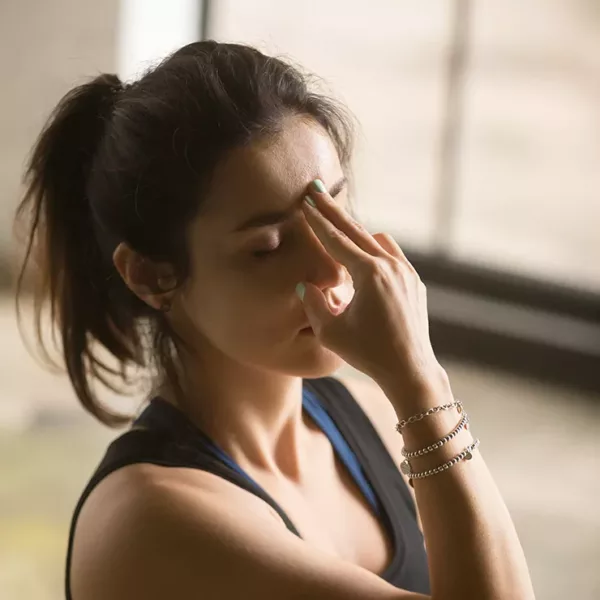

Pranayama
While pranayama practices will be included in daily classes, there will be dedicated sessions specifically focused on pranayama. In these sessions, you will learn various breathing techniques, such as anulom-vilom pranayama, nadi shodhan pranayama, sitkari, ujjayi, kapalbhati, and more. Additionally, we will provide lectures on the philosophy of pranayama, as well as the philosophy of the pancha prana.
- What is Prana and Pranayama?
- How Prana flow in the body?
- Types of major and sub prana
- Pranayama and life span
- Prana healing
- Know how to breath correctly?
- Diaphragmatic breathing and qualities of breath
- Anatomy of pranayama
- Kapal Bhati Pranayama Level I
- Bhastrika Pranayama Level I
- Bhramari Pranayama Level I
- Sitli and Sitkari Pranayama without retention
- Yogic breathing Level I with sitting and supine position
- Nadi sodhanam Pranayama 1 technique



Mudra (Gesture or Attitude)
Maha Mudra, also known as the Great Gesture, is the first Mudra mentioned in both Hatha Yoga Pradeepika and Gheranda Samhita. In Sanskrit, ‘Maha’ means great, and ‘Mudra’ refers to a gesture, attitude, or seal. Maha Mudra is a technique designed to elevate human consciousness to higher levels and improve health. It is highly recommended by yogis and is best practiced in the morning on an empty stomach. Performing Maha Mudra creates a conducive environment for meditation practices, making it ideal to incorporate before the start of meditation.
- What is Mudra and its necessity in yoga?
- Jnana Mudra
- Chin mudra
- Bhairava mudra
- Vishnu/pranayama mudra
- Origin of Mudras
- Why hand mudras?
- Benefits of Mudra practice
- Five elements theory
- Acupressure and Scientific theory
- Types of Hand mudra

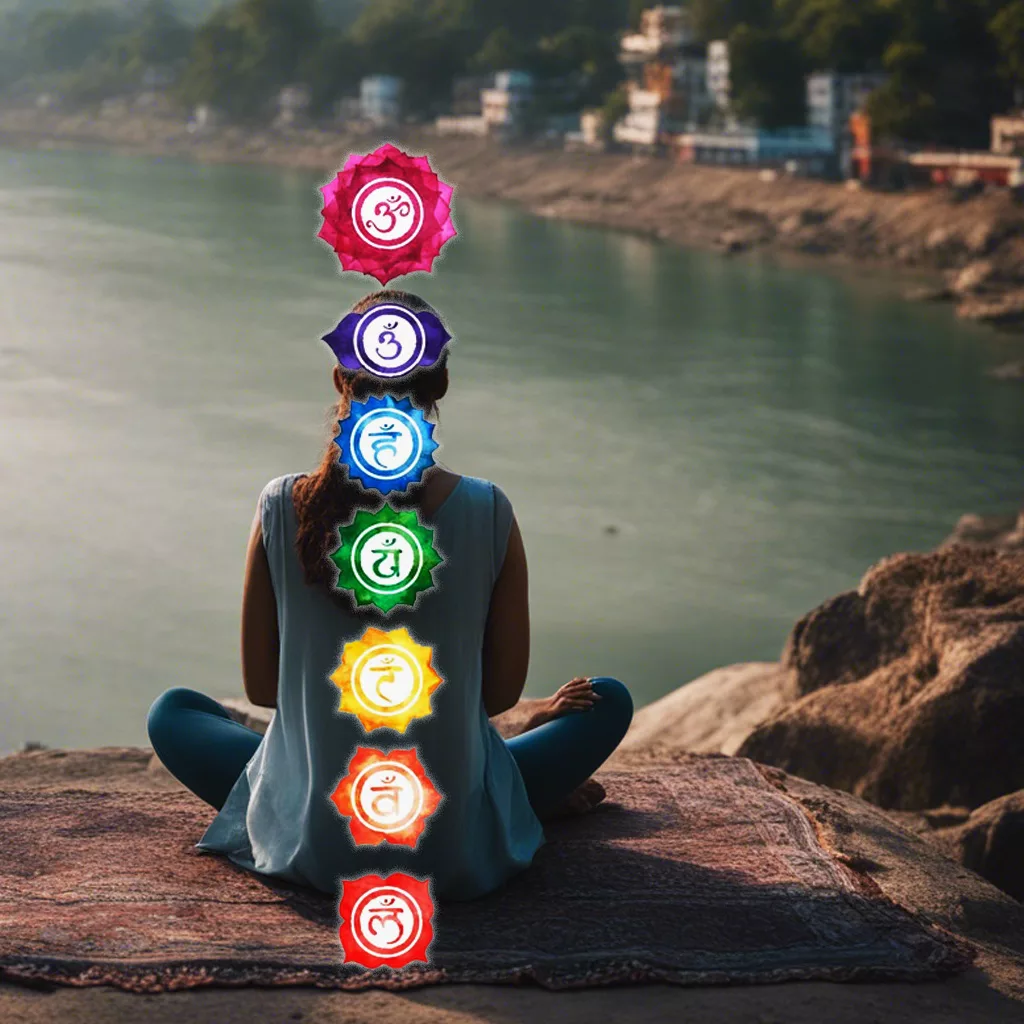

Bandha (Yogic locks)
A Bandha, or yogic lock, enables a yogi to block and direct the flow of pranic energy in a specific way to alter the energy pattern in the body. Bandhas not only modify the flow of pranic energy through the nadis (energy meridians) but also affect the flow of nerve currents in the nervous system and blood flow through the blood vessels. Bandhas are mentioned in most classical yoga texts, such as Hatha Yoga Pradeepika, Gheranda Samhita, Siva Samhita, etc. In yogic scriptures, Bandhas are often grouped with mudras or yogic gestures. The reason for this is that both Bandha and Mudra modify the energy pattern in the body, leading to heightened levels of awareness.
- What are Energy blockages?
- Reasons for blocking the energy and chakras
- Three major energy blockages
- Mula bandhas (Root lock) Level I
- Uddiyana bandha (Abdominal lock) Level I
- Jalandhar Bandha (Throat Lock) Level I
- Maha Bandha ( Great Lock) Level I
- Mula bandha (for stability and awakening of Kundalini)
- Uddhiyana bandha (Abdominal lock for balancing inner organs)
- Jalandhar bandha (throat lock)
- Maha Bandha
- What are Energy blockages?
- Reasons of blocked energy and chakras

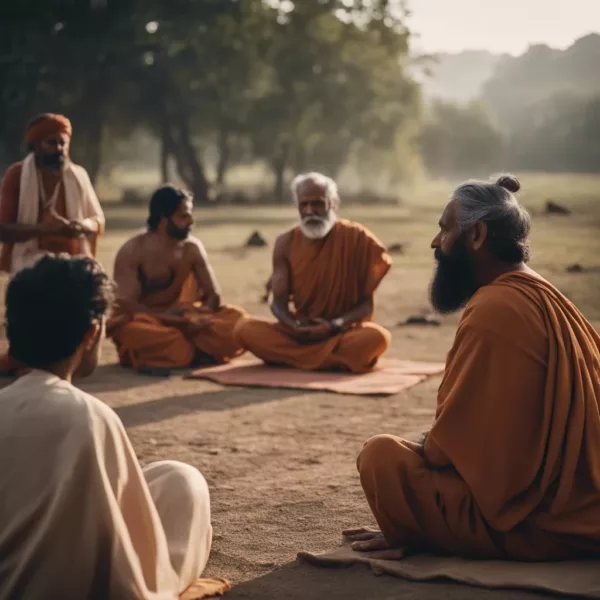

Yoga Philosophy / Life Style Ethics
The main philosophy of yoga is simple: the mind, body, and spirit are all interconnected and cannot be clearly separated. However, a multitude of philosophical ideas has been developed by delving into the deeper dimensions of the body, mind, and spirit.
- Yoga Tradition and History of yoga
- The Classical Texts of Yoga Tradition
- Yoga Sutra of Patanjali – Raja Yoga
- Bhagavat Gita – Lord Krishna
- What is Hatha Yoga
- Mind and its functions
- Chakras and Kundalini in Yoga
- Hinduism – a way of living not a religion
- Yoga philosophy and understanding of Truth
- Patanjali Yoga Sutras
- Hatha Yoga Pradipika

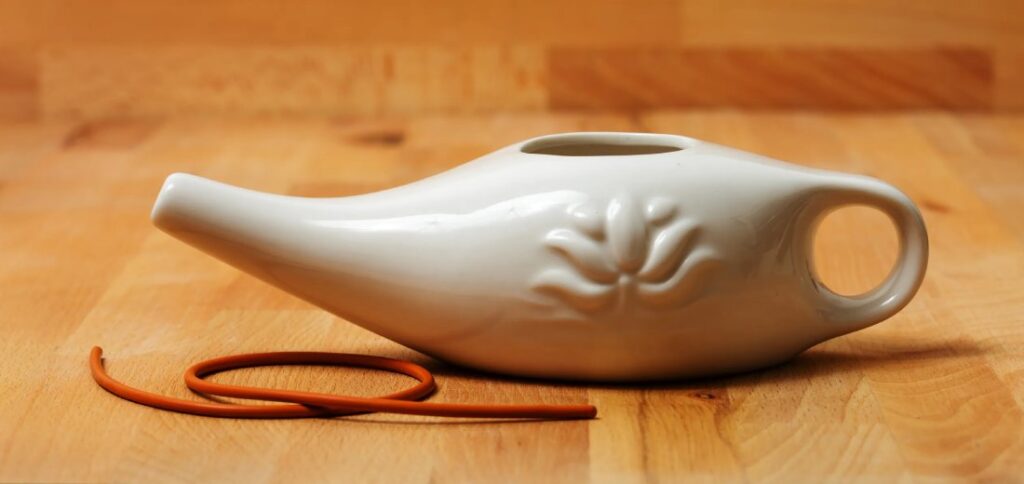

Shatkarma
Shatkarma is a set of yogic purifications for the body, forming a part of yoga sadhanas or practice. Their purpose is to remove impurities and toxins accumulated in the body, and they are clinical in nature. Shatkarma helps in curing diseases and prepares the body for Asanas and Pranayama.
- Jal Neti (Nasal cleaning for opening the cognitive senses)
- Rubber Neti (Nasal cleaning with a cathedral for intense nasal block)
- Agnisar Kriya
- Kapalbhati Kriya
- Trataka Kriya
- Kunjal Kriya



Mantra Chanting
Chanting has been an integral part of all religions throughout the ages. As we sit together in one place, we may have different thoughts. However, when we start chanting, there is one thought and one rhythm in all our minds. All minds become one. This oneness creates a profound energy that enlivens us.

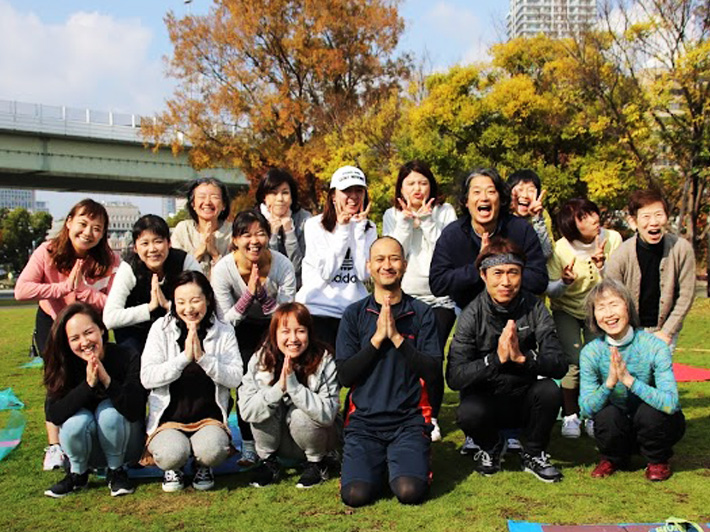
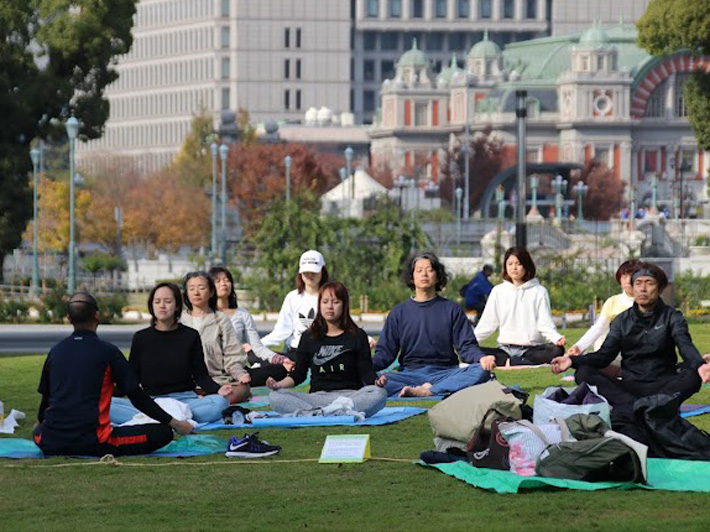
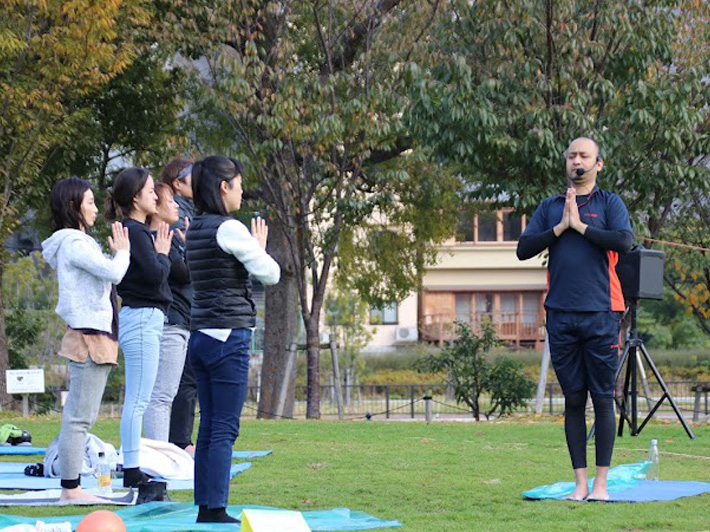
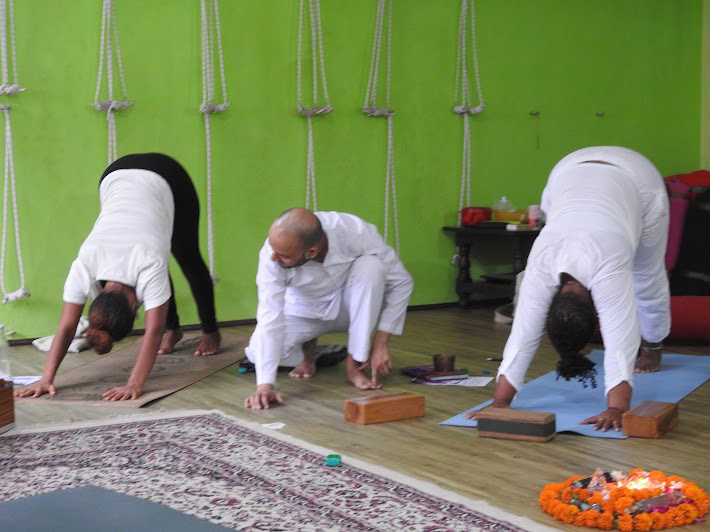
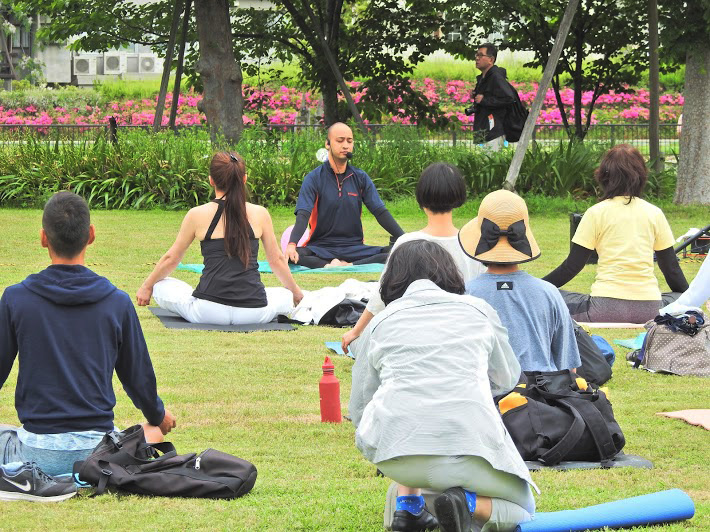
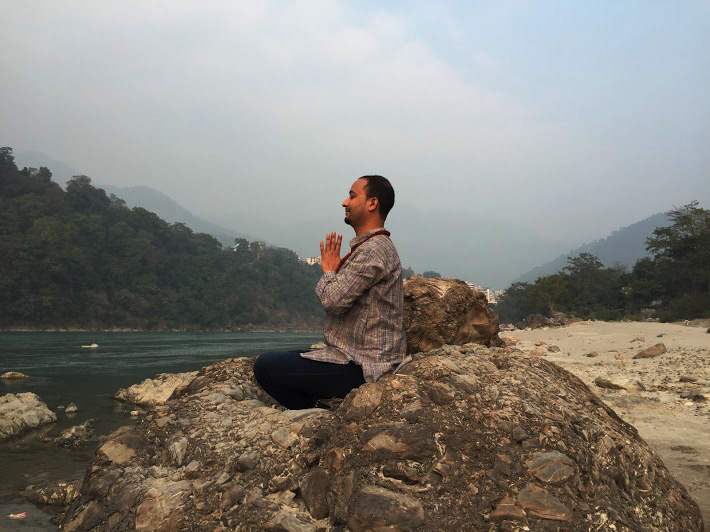

Daily Schedule
Outline of the Schedule (Subject to Changes):
5:30 AM – Wake up
6:00 to 7:15 AM – Pranayama, Meditation, Chanting, Shatkarma
7:15 to 7:45 AM – Tea Break
7:45 to 9:00 AM – Hatha Yoga
9:00 to 10:00 AM – Breakfast
10:30 to 12:00 PM – Yoga Philosophy
12:00 to 12:30 PM – Tea Break
12:30 to 1:30 PM – Therapeutic Alignment, Human Anatomy/Physiology
1:30 to 2:30 PM – Lunch
3:00 to 4:00 PM – Rest/Self-Study
4:30 to 6:30 PM – Postures/Alignment Hatha Movement
7:00 to 8:00 PM – Dinner
9:30 PM – Sleep (Lights out)

Additional Information
Course Fee Includes:
- Accommodation facilities with a private room and attached bathroom for your comfort and privacy.
- Free Wi-Fi service throughout the campus to stay connected with loved ones.
- 24-hour hot water facility.
- Free filter mineral water facility to keep you hydrated and healthy during the course.
- Three pure vegetarian meals per day (breakfast, lunch, and dinner) to nourish your body and mind.
- Two tea breaks (morning and evening) to keep you energized and focused throughout the day.
Study Materials:
- Main text book, Anatomy text book, Note book.
- Shatkarma Kit (Cleansing tools).
Recreational Activity:
- One Day Sightseeing near Rishikesh.
- One day ancient temple visit
Eligibility:
- At Sunshine Yoga School, we welcome individuals above the age of 18 years to enroll in our courses. However, we request that students inform us in advance of any medical conditions they may have, and provide proper certifications as required. It is important to note that we cannot be held responsible for any consequences that may arise as a result of lack of information.
- For the safety and well-being of all our students, we strongly advise pregnant women to consult with their physicians before enrolling in our courses. This will ensure that any necessary precautions or modifications can be made to ensure a safe and comfortable experience.
- At Sunshine Yoga School, we are committed to providing a supportive and inclusive learning environment for all students. If you have any concerns or questions regarding eligibility or medical conditions, please do not hesitate to contact us. Our team is always available to provide guidance and support as needed.
Terms & Conditions:
- At Sunshine Yoga School, we believe in promoting a Sattvic lifestyle during the course period, with a focus on simplicity, purity, and mindfulness. To ensure that all students can fully immerse themselves in the course, there will be no intoxications or fancy meals allowed for the duration of the course. Additionally, to maintain a distraction-free environment, friends or relatives are not allowed to visit during course timings, unless they are registered for the program.
- Our accommodation is designed to provide a simple and peaceful living space, with each student allotted one room with an attached toilet. Our meals are also prepared with a focus on purity and simplicity, following the principles of a Sattvic diet.
- Please note that fees, once paid, are non-refundable. However, in the event of a solid reason, if somebody has to withdraw, we may offer a fee adjustment or further dates of rejoining the program.
- For any grievances please contact the course coordinator.
- It is important to note that Sunshine Yoga School reserves the right to cancel a student’s candidature at any time during the course in the event of non-compliance with our code of conduct or any other forms of misconduct. We take the well-being and safety of our students and community seriously and will take appropriate action if necessary to maintain a harmonious and respectful learning environment.
Area Information:
- Rishikesh is a sacred town nestled in the foothills of the Himalayas on the banks of the Ganges.
- There are restrictions on alcohol, egg, and meat.
- Drink only bottled water, which is readily available throughout the town.
- Good medical doctor and dentist facilities are available.
Climate: Rishikesh climate is continental type, but the weather is pleasant as Rishikesh located at the foothills providing cool breeze. The best time to visit is from mid September to April.